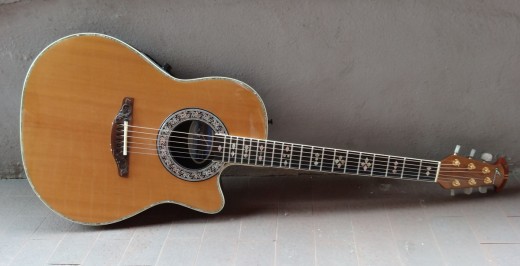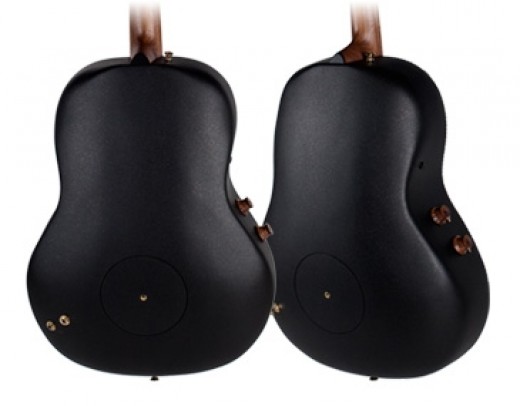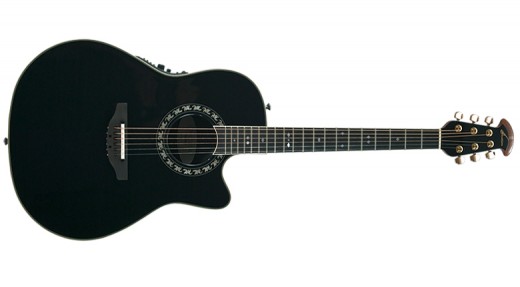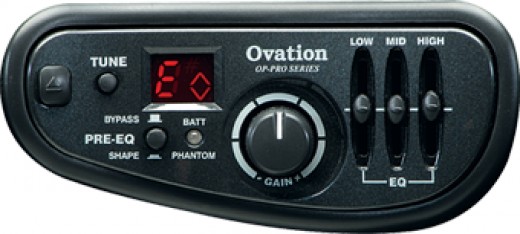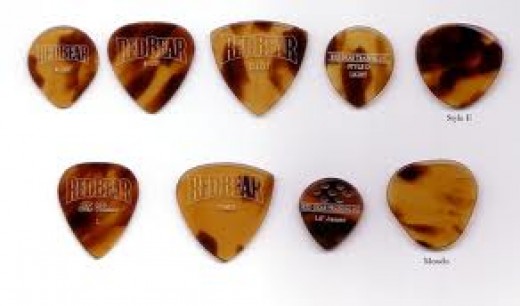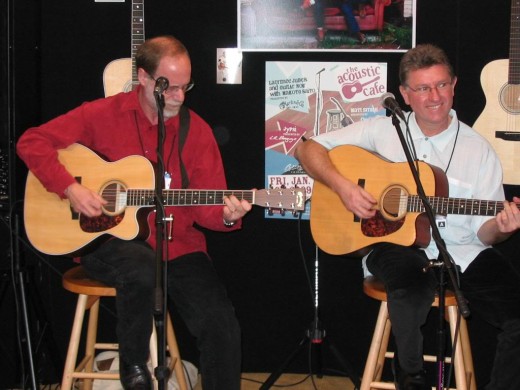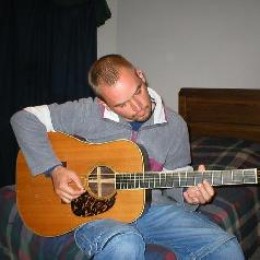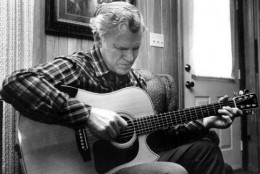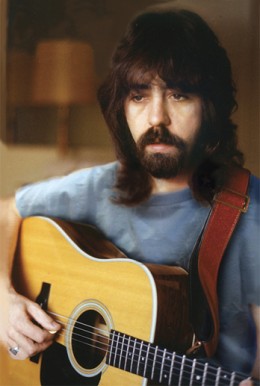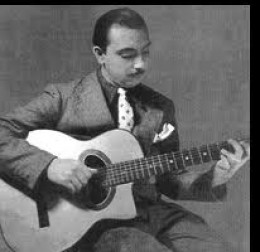Clarence White
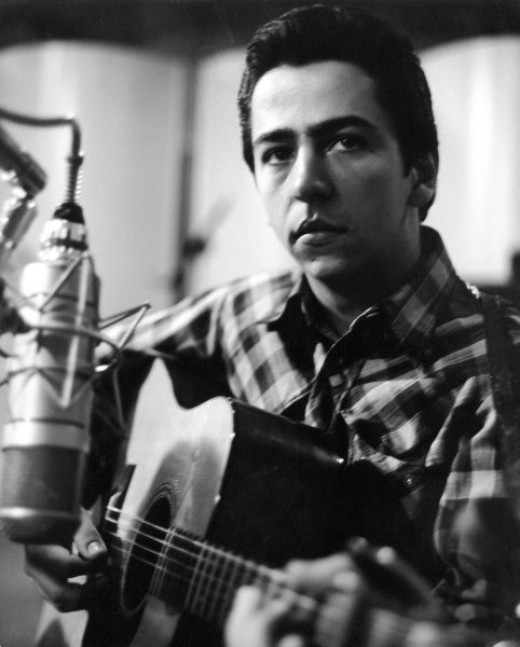
Who Are The Great Flatpickers?
Who
the great flatpickers are is totally a matter of personal opinion, and
speculation. Music isn't a contest, but I damn sure enjoy seeing the
flatpicking guitar contest at the Walnut Valley Festival in Winfield,
Kansas. But music is not a contest, music is a celebration, an art form,
a lamentation, a personal expression, and a communication that is
beyond language and words. Music is more than those things that I just
mentioned, and modern mass media promoted music is far, far less than
any of the things that I listed.
If someone is interested in Flatpicking, then there is no better resource available in the entire world than Flatpicking Guitar Magazine. Dan Miller is the owner and publisher, and I've met Dan, a very nice guy, at the Walnut Valley Festival, in Winfield, Kansas. There's no reason for Dan to remember me from there - but he also has a website that supports his extremely useful magazine, and of course I have a profile there - I do a lot of talking and writing and listening to music, and I do the same things concerning the types of guitars that are used to make that same kind of music. So in other words, the owner of Flatpicking Guitar Magazine might recognize my name, or he might not - it doesn't much matter.
The "mission statement" from the website that supports Flatpicking Guitar Magazine says it all about who the great Flatpicking guitarist are, observe the following:
"Flatpicking Guitar Magazine is a bi-monthly periodical, and companion audio CD, dedicated to presenting all aspects of the art of flatpicking the acoustic guitar as pioneered by such great guitarists as Doc Watson, Clarence White, Norman Blake, Tony Rice, and Dan Crary. Our goal is to help you increase your own skill level and enjoyment of this fine art as it pertains to the musical genres of bluegrass, old-time, folk, Celtic, Western swing, gypsy jazz, new acoustic music, and acoustic rock. "
If someone is interested in Flatpicking, then there is no better resource available in the entire world than Flatpicking Guitar Magazine. Dan Miller is the owner and publisher, and I've met Dan, a very nice guy, at the Walnut Valley Festival, in Winfield, Kansas. There's no reason for Dan to remember me from there - but he also has a website that supports his extremely useful magazine, and of course I have a profile there - I do a lot of talking and writing and listening to music, and I do the same things concerning the types of guitars that are used to make that same kind of music. So in other words, the owner of Flatpicking Guitar Magazine might recognize my name, or he might not - it doesn't much matter.
The "mission statement" from the website that supports Flatpicking Guitar Magazine says it all about who the great Flatpicking guitarist are, observe the following:
"Flatpicking Guitar Magazine is a bi-monthly periodical, and companion audio CD, dedicated to presenting all aspects of the art of flatpicking the acoustic guitar as pioneered by such great guitarists as Doc Watson, Clarence White, Norman Blake, Tony Rice, and Dan Crary. Our goal is to help you increase your own skill level and enjoyment of this fine art as it pertains to the musical genres of bluegrass, old-time, folk, Celtic, Western swing, gypsy jazz, new acoustic music, and acoustic rock. "
Clarence White
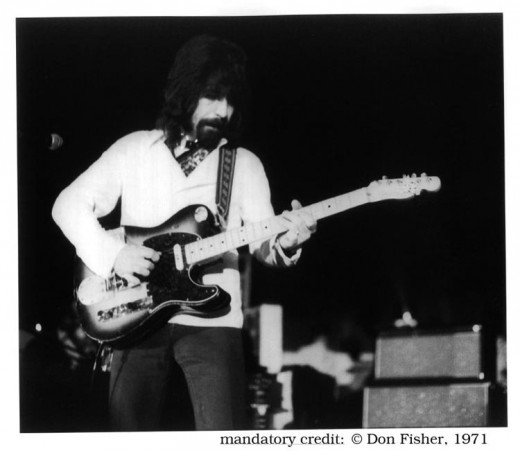
The Great Flatpickers - Clarence White
From
the quote from the Mission statement of the website that supports the
finest resource that I know of for Flatpickers - you get a clear list of
names concerning who the great ones are. I could easily produce a
Hubpages article about all of those persons, and in time, I just might
do that. For this article, however, we are going to talk about the
greatness of Clarence White. No disrespect here to Doc Watson, as he
probably - I'm not positive - pre dated Clarence White in the genre, and
the both of them are not "just" flatpickers. Doc Watson is a well known
fingerpicker, vocalist, and even plays some banjo. One of the oddest
things about Doc Watson's story is that he'd not started off playing
fiddle tunes on the acoustic guitar, no - Doc Watson started off his
folk music career playing fiddle tunes on a Gibson Les Paul!
I want to focus on the greatness of Clarence White here - but I also would like the reader to understand straight away that the most amazing music that I've heard performed by Clarence White exists on a copied cassette tape that I have, is bootleg material, and isn't going to be something that I can present for you to enjoy, or judge here. Not only that - but the most amazing electric guitar work by Clarence White. . . .I've never found in video, but that music is available on compact disc, as it was recorded with The Byrds. But Clarence White was more than that - Clarence White, though the proof is hard to find, had seemed to have gotten tired of the acoustic guitar, and flatpicking scene. By the early end of his life he'd moved on into things like hybrid picking, which is a combination of both fingerpicking and flatpicking, and also the electric guitar country blues style that he'd performed with The Byrds.
I want to focus on the greatness of Clarence White here - but I also would like the reader to understand straight away that the most amazing music that I've heard performed by Clarence White exists on a copied cassette tape that I have, is bootleg material, and isn't going to be something that I can present for you to enjoy, or judge here. Not only that - but the most amazing electric guitar work by Clarence White. . . .I've never found in video, but that music is available on compact disc, as it was recorded with The Byrds. But Clarence White was more than that - Clarence White, though the proof is hard to find, had seemed to have gotten tired of the acoustic guitar, and flatpicking scene. By the early end of his life he'd moved on into things like hybrid picking, which is a combination of both fingerpicking and flatpicking, and also the electric guitar country blues style that he'd performed with The Byrds.
What Makes Clarence White Great?
What
makes Clarence White so great? Clarence White probably didn't think he
was so great, and in my opinion, that's a huge part of what made
Clarence White so great. No, don't get me wrong here - I'm sure the man
knew that he was a cut above the rest, but he never really tried to show
off, he ALWAYS tried to do the small things in support of everything in
every band he participated in, his goal was not to outshine everyone
else in a band, but to always make the entire band, and any given song,
sound as close to perfect as possible.
Clarence White was a flatpicker, a crosspicker, a hybrid picker, and electric guitarist, a vocalist, a mandolin player, and someone who never stopped experimenting with things in music that most people never experiment with - timing. Clarence White was the person who would play a mind blowing solo that was basically simple. How is this? What do I mean? I mean that the solos that Clarence would play could actually be simple in that they wouldn't take a huge amount of technical proficiency - except for the fact that he'd place notes exactly where you wouldn't expect them to be. He was a master of syncopation.
Clarence White was someone who dabbled in "tricks," and when Clarence White had tricks - nobody else could figure out what the hell that it was that he was doing. Now, what I want to show you first has nothing to do with flatpicking, yes, Clarence White is something like a "God" to flatpidkers, but he's also a guy who made people like Jimmy Page of Led Zeppelin fame say things like,
"How the Devil Does He Do THAT?"
Clarence White was a flatpicker, a crosspicker, a hybrid picker, and electric guitarist, a vocalist, a mandolin player, and someone who never stopped experimenting with things in music that most people never experiment with - timing. Clarence White was the person who would play a mind blowing solo that was basically simple. How is this? What do I mean? I mean that the solos that Clarence would play could actually be simple in that they wouldn't take a huge amount of technical proficiency - except for the fact that he'd place notes exactly where you wouldn't expect them to be. He was a master of syncopation.
Clarence White was someone who dabbled in "tricks," and when Clarence White had tricks - nobody else could figure out what the hell that it was that he was doing. Now, what I want to show you first has nothing to do with flatpicking, yes, Clarence White is something like a "God" to flatpidkers, but he's also a guy who made people like Jimmy Page of Led Zeppelin fame say things like,
"How the Devil Does He Do THAT?"
Muleskinner
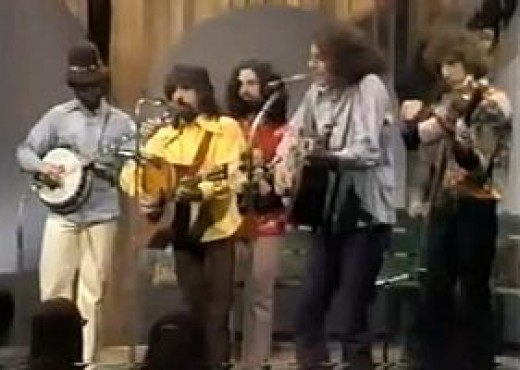
The Clarence White Guitar Workshop Video
- Clarence White: Guitar Workshop - Clarence White - DVD (UPC 0765401200595) - Buy Books, Music and M
Find Clarence White: Guitar Workshop - Clarence White at Borders - Books, Music and Movies. Available in DVD (UPC 0765401200595) at Borders.com
The True Beauty of Flatpicking Via Clarence White!
Clarence White -Subtlety, and Accompaniment
Obviously,
there is a whole lot more to being a musician of any worth than merely
being a soloist. Have you ever noticed that "American Idol" is all about
the individual? How much of a band is made up by one individual?
Typically about twenty, or twenty five percent - which leaves the
majority of a band's sound outside the realm of any one person. Clarence
White knew as well as anyone who ever lived that the guitar isn't just a
soloist's instrument, rather, the guitar was created for accompaniment.
Basically, everything done in the two videos of this section is meant for the whole of the sound, and not for Clarence White to just show you how good he is. Of course the end result here is that you can truly see how great that he was, and you get a bit of an education in what music should be, but no longer is in American mass media. Music is about a group, it's never about an individual. I don't care who you are - if you aren't performing by yourself, then there are supporting musicians that contribute, this is the great folly in what passes for "culture" in America today. "American Idol" is all about individuals who can't even play an instrument, so how are they to be someone's "Idol," by singing?
The "Muleskinner" band was perhaps the greatest bluegrass band that ever existed, but it was never meant to be presented as if it would. It's a collection of young hippies that play Bluegrass music, the new generation of greats that was taking the fore then. In the video, you see Clarence white not even play a solo in the first song, and then he plays a very understated one in the second. If you watch and listen closely you can see how his rhythm guitar playing compliments everything - and of course his vocals here add to the timbre of the whole.
But this next video with "The Crawdad Song," THIS video I want to tell you about. The video with "The Crawdad Song," that is what MUSIC is all about! It really can't get much better - oh sure, the vocalist is a tv show host, and so THAT could get better, but if you are dwelling on that, then you are totally missing the point! The point is that in that video it's just some guys sitting around making music, and that, my friends, is REAL music. Music isn't some whore in spandex doing the dance moves that some choreographer taught him or her to do, singing lyrics that some pop lyrics writer devised, and all on a video that yet another person put together - that crap isn't music at all! The choreographed, ghost written, dancing harlot routine is the paradigm of mediocrity that is sold in America today, but it's damn sure not music.
In "The Crawdad Song" here we see Clarence White doing some of most everything that made him the preeminent flatpicking guitarist of his day, but not everything he is doing is "flatpicking," and that is just fine. If you will watch the master picker's right hand closely, then you will see that Clarence is employing some "hybrid picking" in this, which is to say that while operating the pick with his right hand, he is also doing some bits of fingerpicking with his right hand as well. It's an altogether difficult technique with absolutely beautiful results. What I find most beautiful here is the way Clarence White fills the otherwise "empty spaces" between the vocals with beautiful, soft little bits of flatpicking to fill in the gaps, the whole is always more important than the sum of it's parts, and very few seem to realize that so well as did Clarence White.
Basically, everything done in the two videos of this section is meant for the whole of the sound, and not for Clarence White to just show you how good he is. Of course the end result here is that you can truly see how great that he was, and you get a bit of an education in what music should be, but no longer is in American mass media. Music is about a group, it's never about an individual. I don't care who you are - if you aren't performing by yourself, then there are supporting musicians that contribute, this is the great folly in what passes for "culture" in America today. "American Idol" is all about individuals who can't even play an instrument, so how are they to be someone's "Idol," by singing?
The "Muleskinner" band was perhaps the greatest bluegrass band that ever existed, but it was never meant to be presented as if it would. It's a collection of young hippies that play Bluegrass music, the new generation of greats that was taking the fore then. In the video, you see Clarence white not even play a solo in the first song, and then he plays a very understated one in the second. If you watch and listen closely you can see how his rhythm guitar playing compliments everything - and of course his vocals here add to the timbre of the whole.
But this next video with "The Crawdad Song," THIS video I want to tell you about. The video with "The Crawdad Song," that is what MUSIC is all about! It really can't get much better - oh sure, the vocalist is a tv show host, and so THAT could get better, but if you are dwelling on that, then you are totally missing the point! The point is that in that video it's just some guys sitting around making music, and that, my friends, is REAL music. Music isn't some whore in spandex doing the dance moves that some choreographer taught him or her to do, singing lyrics that some pop lyrics writer devised, and all on a video that yet another person put together - that crap isn't music at all! The choreographed, ghost written, dancing harlot routine is the paradigm of mediocrity that is sold in America today, but it's damn sure not music.
In "The Crawdad Song" here we see Clarence White doing some of most everything that made him the preeminent flatpicking guitarist of his day, but not everything he is doing is "flatpicking," and that is just fine. If you will watch the master picker's right hand closely, then you will see that Clarence is employing some "hybrid picking" in this, which is to say that while operating the pick with his right hand, he is also doing some bits of fingerpicking with his right hand as well. It's an altogether difficult technique with absolutely beautiful results. What I find most beautiful here is the way Clarence White fills the otherwise "empty spaces" between the vocals with beautiful, soft little bits of flatpicking to fill in the gaps, the whole is always more important than the sum of it's parts, and very few seem to realize that so well as did Clarence White.
The Clarence White Chronicles.
- Clarence White Chronicles 1
In this issue you'll read a very interesting story about Wayne Moore and NASHVILLE WEST, including Clarence White on lead guitar (stringbender), Gene Parsons on drums and Bib Guilbeau on rhythm guitar.We can know not only about Wayne Moore but also
Enduring Legend, Clarence White
While
I'm a huge fan of persons like Eric Clapton, Jimi Hendrix, and Jeff
Beck - I'm a bigger fan of Clarence White's. I'm not alone in the least
bit with that position either. While Clarence White is mostly featured
in this Hub as an acoustic flatpicking guitarist, he does compare to the
more famous legends that I just mentioned as he was the primary
guitarist for a major American recording and touring act, The Byrds, during the time that the others, and people like Led Zeppelin's
Jimmy Page - were in their heyday. Of course part of the problem with
any comparisons to electric guitarists are that this is a flatpicking
article, but while with The Byrds Clarence white pioneered an
electric guitar style that wasn't the least bit similar to anyone else's
- but that's another article.
While people like Jimi Hendrix and Pete Townsend made names for themselves by acting stupid on stage, and destroying instruments, Clapton had "Clapton Is God" inscribed by adoring fans in subway stations, and Jeff Beck was forever being Jeff Beck, and doing whatever that entailed at any given moment - Clarence White never drew attention to himself, and was even said to never smile. There is truly a huge difference between a musician and a drama queen or king - even though sometimes the two do intersect on the highway of musicianship, they didn't with Clarence White, and so his cult legend continues to grow not only here in the States, but in far away places like Japan.
The following video, "I Am A Pilgrim/Soldier's Joy" shows most everything that there is to show about the greatness of Clarence White as a flatpicker, and a musician who evolved and created his own distinct style and with it's own characteristics that can't really be mimicked. In I Am A Pilgrim you get all of the legendary syncopation, the experimentation with timing that Clarence is most known and revered for, and a huge dose of hybrid picking as well. Following that, with Soldier's Joy you see a classic and timeless fiddle tune, and the more speedy flatpicking style that most folks today go for with the genre. It could be that some of the other musicians get a bit out of time, but pay them no mind - this is the Clarence White show.
While people like Jimi Hendrix and Pete Townsend made names for themselves by acting stupid on stage, and destroying instruments, Clapton had "Clapton Is God" inscribed by adoring fans in subway stations, and Jeff Beck was forever being Jeff Beck, and doing whatever that entailed at any given moment - Clarence White never drew attention to himself, and was even said to never smile. There is truly a huge difference between a musician and a drama queen or king - even though sometimes the two do intersect on the highway of musicianship, they didn't with Clarence White, and so his cult legend continues to grow not only here in the States, but in far away places like Japan.
The following video, "I Am A Pilgrim/Soldier's Joy" shows most everything that there is to show about the greatness of Clarence White as a flatpicker, and a musician who evolved and created his own distinct style and with it's own characteristics that can't really be mimicked. In I Am A Pilgrim you get all of the legendary syncopation, the experimentation with timing that Clarence is most known and revered for, and a huge dose of hybrid picking as well. Following that, with Soldier's Joy you see a classic and timeless fiddle tune, and the more speedy flatpicking style that most folks today go for with the genre. It could be that some of the other musicians get a bit out of time, but pay them no mind - this is the Clarence White show.
Conclusion.
Clarence
White, one of the legends and "Godfathers" of flatpicking guitar, was
much more than that - he pioneered some amazing electric guitar
techniques, demonstrated the possibilities of difficult techniques such
as hybrid picking, and was an interesting vocalist as well. He died very
young due to being ran over by a drunken driver while getting equipment
out of the back of a touring van. I'm told that he is survived by a
wife and daughter, and of course, millions of guitarist and fans
worldwide.
In a future article, or several, I'll probably get into the many high end acoustic guitars that are modeled after the one that Clarence White made most famous, his 1935 Martin D 28, very modified, and currently owned by the only person who can compare to him in the realm of flatpicking, Tony Rice.
In a future article, or several, I'll probably get into the many high end acoustic guitars that are modeled after the one that Clarence White made most famous, his 1935 Martin D 28, very modified, and currently owned by the only person who can compare to him in the realm of flatpicking, Tony Rice.


 9:33 PM
9:33 PM
 Wesman Todd Shaw
Wesman Todd Shaw

